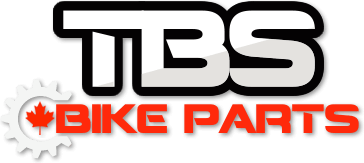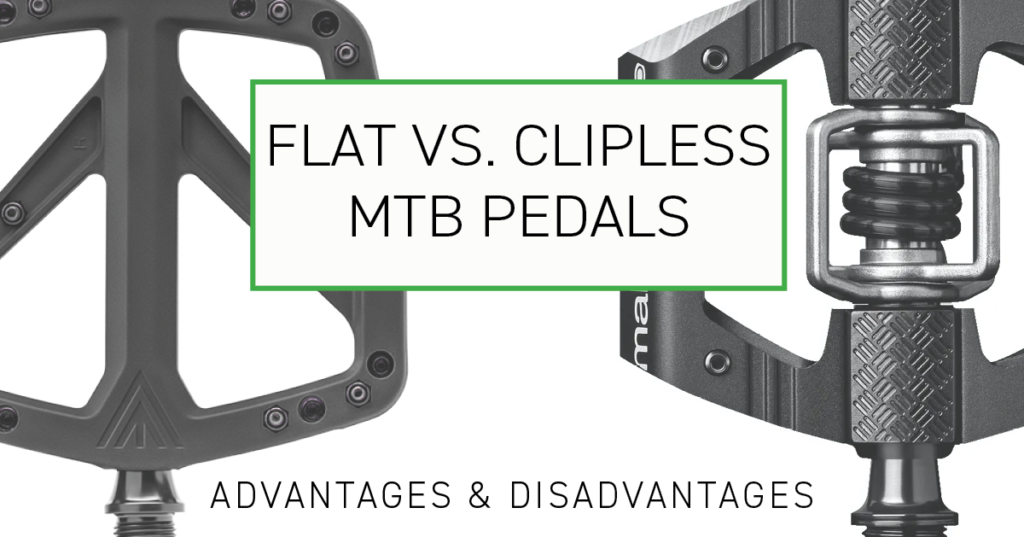Flat vs. Clipless MTB Pedals – Advantages & Disadvantages
Flat and clipless mountain bike (MTB) pedals serve different purposes and have different advantages. So what exactly are the advantages and disadvantages of the two options? We are going to break down all of that below.
Flat MTB pedals are a type of bike pedal that do not have a mechanism for clipping in the rider's shoes. They provide a large platform for the rider's feet to rest on and often have pins or studs for added grip. Overall, flat pedals are a versatile option that can be used for a variety of riding styles, but they may not be the best choice for riders looking to maximize their power and efficiency.
Clipless MTB pedals are a type of bike pedal that allow the rider to clip their shoes directly into the pedal for increased efficiency in power transfer, stability during hard pedaling, and improved control and responsiveness. To use clipless MTB pedals, the rider needs to wear specialized shoes that have cleats on the bottom that clip into the pedal. The system requires a small learning curve to properly engage and disengage from the pedals, but once mastered, it can lead to a more efficient and enjoyable ride experience.
Advantages of flat MTB pedals:
- Increased stability and control for technical riding
- Quick, easy exit from the bike in case of an emergency
- Ability to wear flat shoes, making it more comfortable for long rides
- More versatile, can be used for a variety of riding styles
- No need to purchase special shoes to use the pedals.
- Generally more affordable than clipless pedals.
Disadvantages of flat MTB pedals:
- Reduced efficiency in power transfer compared to clipless pedals
- Feet can slip off the pedals, leading to loss of control
- Less stability during hard pedaling
- Difficult to generate maximum power with flat pedals
- May require more leg strength to maintain balance and control.
Advantages of clipless MTB pedals:
- Increased efficiency in power transfer, allowing for faster and smoother riding
- More stability during hard pedaling
- Ability to pull up on the pedals for added power
- Increased control and responsiveness
- Closer connection between the rider and the bike, improving overall ride experience.
Disadvantages of clipless MTB pedals:
- Requirement to purchase specialized shoes and cleats
- Learning curve to properly engage and disengage from the pedals
- Reduced ability to quickly exit the bike
- Potential for knee injury if not used properly
- Increased cost compared to flat pedals.
The choice between flat or clipless MTB pedals ultimately comes down to personal preference, budget, and riding style. For more technical riding, flat pedals may be a better option as they offer greater stability and control.For more efficiency in power transfer, clipless pedals are the better option as they allow for greater stability during hard pedaling and the ability to pull up on the pedals for added power.
Consider your riding style, goals, and personal comfort when deciding between flat or clipless MTB pedals.
If you are in need of new pedals and looking to upgrade, we have 15 different options in stock with both flat and clipless available. Shop now for Shimano, Crankbrothers, and PNW Components' pedals! Remember that we offer free shipping on all orders over $149CAD in North America. Spend less and ride the best with TBS Bike Parts!

